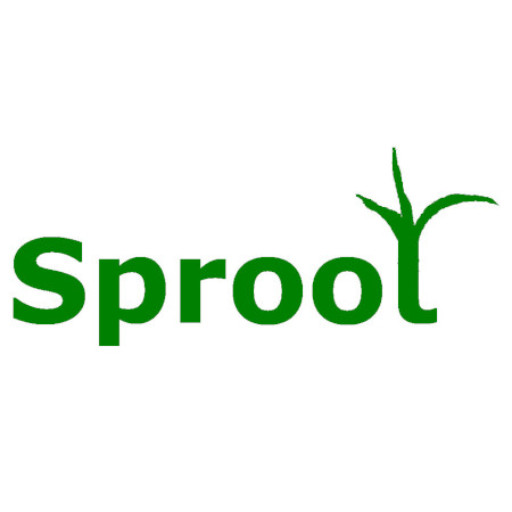When you buy plants online or from mail order, what you see, might not be what you get.
If you remember father Ted trying to explain perspective to Dougal.
Look at those tiny cows!’ says Dougal, pointing to some distant cows outside.
Ted points to some toy plastic cows in front of him and explains.
‘Okay, one last time. These are small…but those out there are far away. Small…far away.’
The same applies to pictures used in adverts, you have no idea of scale, many are close-ups of the flowers, some show a mature plant after 10 years and a lot of them are photoshopped.
Read the description
Compare these two pictures of clematis one has flowers that are 6-9″ across the other is only 2-3″ but looking at the pictures it is not obvious which one. What you should always do is to check the description.
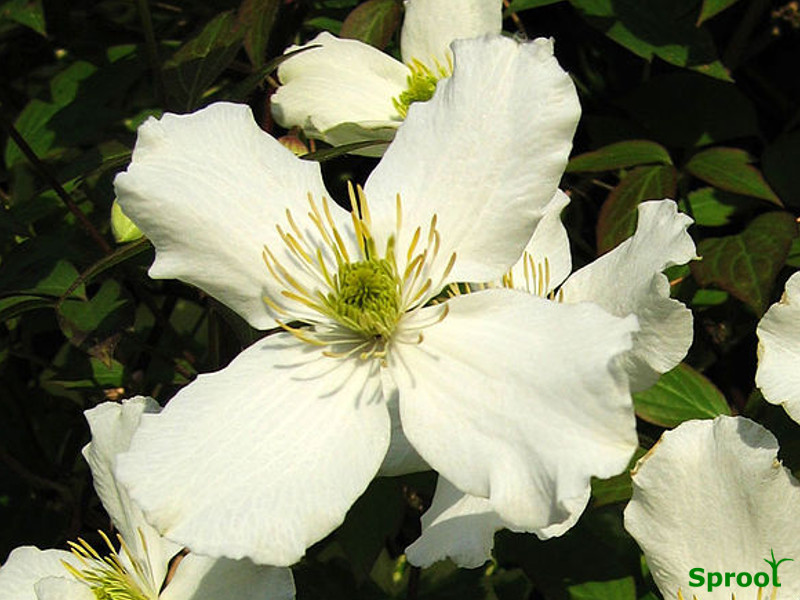
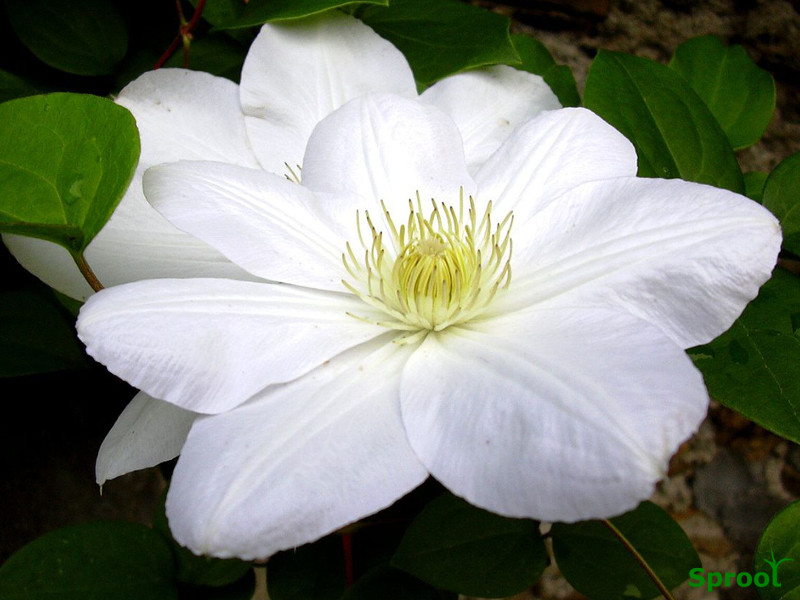
Clematis montana actually has the smaller flower but is still worth buying as it is covered in masses of small flowers.
Buying from a store means you can actually see the plants, but with online, shopping channel, newspaper or magazine sales you need to read the description carefully.
Legally when your plant grows it must match the description on the label or advertised description and picture, so if you ordered a yellow rose you should get a yellow rose. however when it arrives the plant might look different from the picture, quite often the description shows you what it might look like in the future, the actual size you are buying is a bit vaguer.
Plants are available in a wide variety of sizes, plugs or pots, a few weeks old or 20 years plus
Now you need to pay more attention to the small print.
Buried somewhere in the small print is the actual plant size to be supplied, usually, they are sold by pot size.
Plug plants
Plug plants these are the babies of the plant world, grown from seed or cuttings they can be as little as 4 weeks old but could be over 12 months. Plug plants are not all the same size and you need to read the description of the size carefully if there are no dimensions be careful.
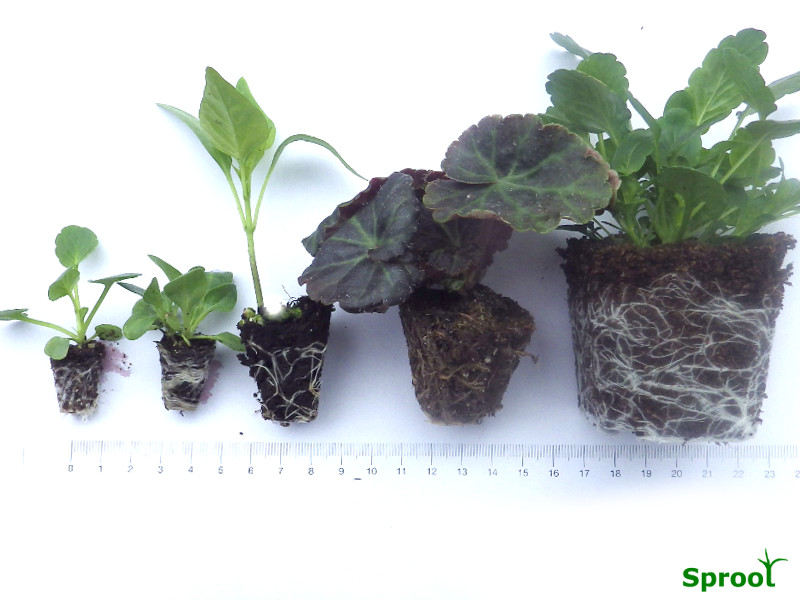
To confuse you even more, companies have created their own descriptions so plug plants may be called plugs, mini-plugs, easiplugs, ready plugs, jumbo plugs or even super plugs.
When we buy plug plants for the nursery we want to know the actual size of the plug, smaller plugs have less compost and room to grow and the plants will be younger. A larger plug will have a plant that is older and with more room to develop, they will be more expensive.
Most plug plants are sold by height e.g. minimum height 5cm this is pretty much useless, you might get a small plug that has stretched or a big plug that is only half-grown.
Pot sizes
Check the description, you should find the actual size buried in the small print
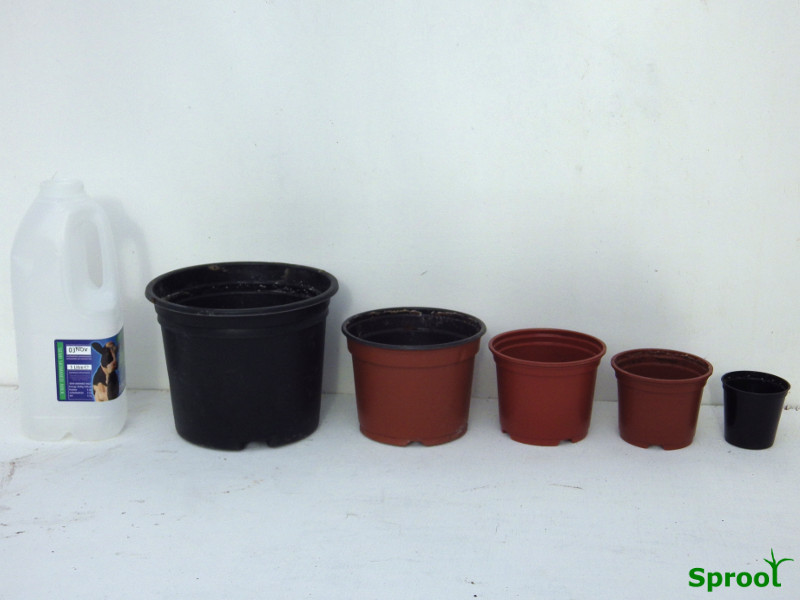
9cm pot
This size is widely used in the trade to grow plants for potting on later. they will normally be under 12 months old but probably more than 6 weeks old. 9cm pots are popular with online sellers they are lightweight, easy to pack and cheaper to buy.
9cm pots are often found in garden centres they are used mainly for alpines, herbs, climbers and patio plants they are cheap to grow and deliver. You may find shrubs packed in 4 or 6 packs as value packs. If you need to fill a garden cheaply 9cm shrubs are a good option they are only 1 year younger than 2-3 litre shrubs that cost 3 times as much.
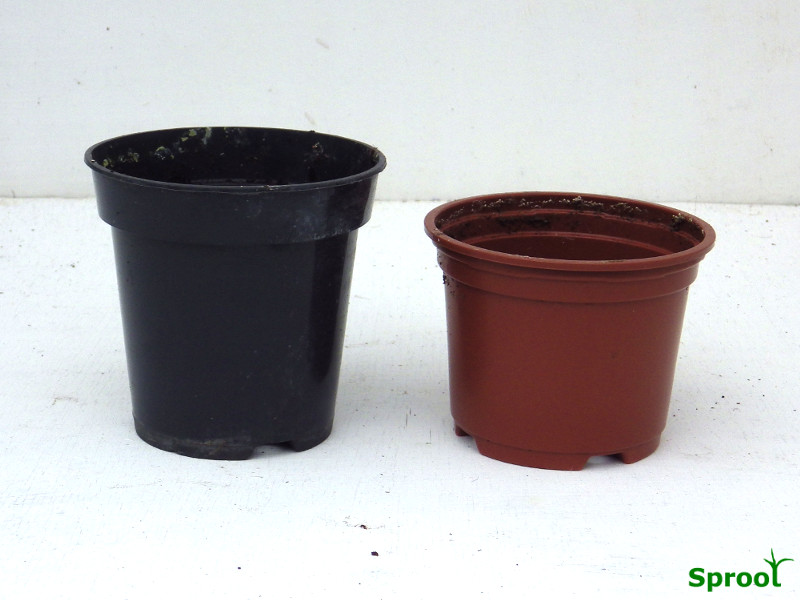
10cm & 11cm pots.
These are quite heavy to deliver and are not often sold online but are widely available in garden centres, the extra compost improves the shelf life and the bigger pot allows the plants to be grown to flowering size. Normally they need potting on into larger pots, hanging baskets or patio pots.
13cm or 1 litre pots
This is a popular size for herbs, alpines, bedding and pot plants, plants have enough compost and room to flower without potting on.
Shrubs and climbers in 13cm pots will need planting or potting on almost immediately.
A lot of plants are sold by pot volume so a 2 litre pot should contain 2 litres of compost and a 3 litre 3 litres of compost, all the way up to 45+ litre pots. The shape can vary but the volume is often stamped on the base of the pot.
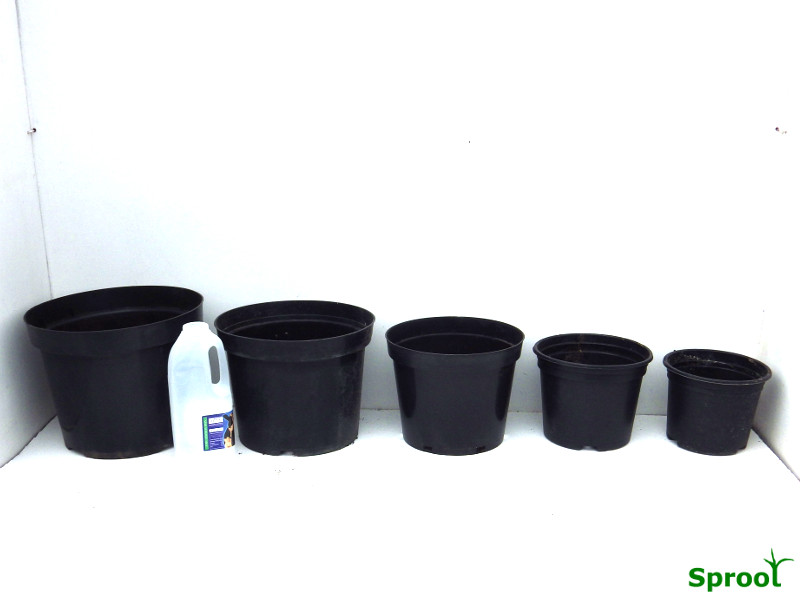
17cm or 2 litre pot
this is a very common shrub and perennial size, plants will be 1-2 years old, they can be left in the pots for up to 6 months before being planted out. Often they are used to grow special offer plants, you can get more per trolley than 3-litre pots this reduces the delivery costs.
17cm or 2 litre deep pot
An extra-long pot often used for fruit bushes, climbers and roses, this stretched pot suits plants with long roots. Its narrow top allows for more pots per trolley this lends itself to special offer prices.
both are 2 litre pots holding the same amount of compost but the deep pot is narrower at the top
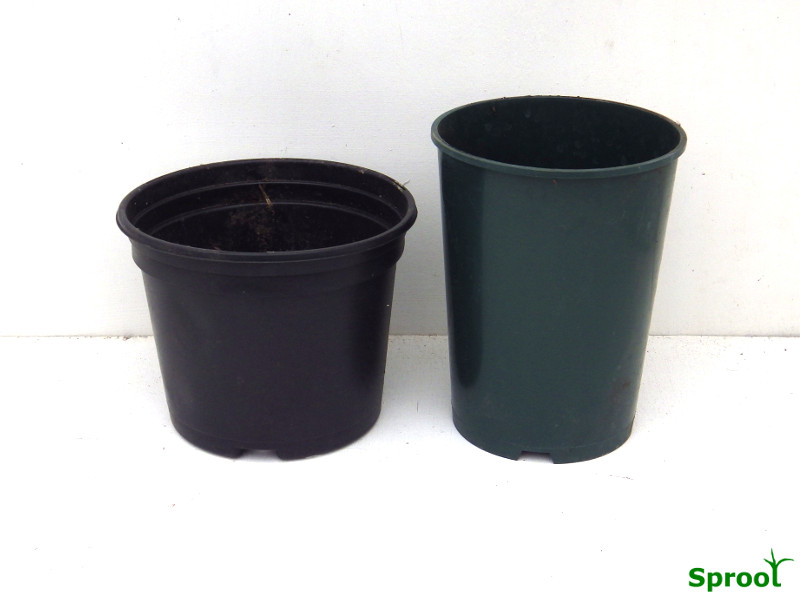
19cm or 3 litre pot
The majority of shrub and perennials will be grown in this pot, the extra litre of compost makes a big difference and gives a better shelf life and often a bigger plant.
Bigger pot sizes, are not often sold Online the delivery costs would be very high. Some nurseries may deliver if local or if you order a large quantity.
5 & 7.5 litre pots
Often used for evergreen shrubs and conifers, plants will be more expensive but they are older and often sold in flower.
10 litre and bigger
Used for trees and specimen plants for instant gardeners. The plants can be more than 4 years old but offer instant results.
Many are grown in Italy where the endless sunshine makes them grow faster, you can usually tell by the gravelly compost used in Italy.
Large pots are quite heavy make sure you have help to lift and plant them, they might not even fit in your car.
Very large specimens may need mini diggers or specialist equipment to plant successfully this should be allowed for in your pricing.
